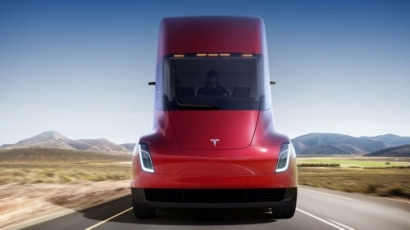
“These groundbreaking electric tractors are poised to usher in a new era in improved safety, reduced environmental impact, and reduced cost of ownership.” said Juan Perez, chief information and engineering officer at UPS.
Tesla introduced the trucks in November on an airport hangar adjoining the company’s Design Center in Hawthorne, California. The company claims, “Overall, the Semi is more responsive, covers more miles than a diesel truck in the same amount of time, and more safely integrates with passenger car traffic.” Tesla also highlighted the fact that the Semi benefits from the regenerative braking that can recapture 98% of braking energy into the battery. (Read REM coverage here)
UPS has provided Tesla real-world UPS trucking lane information as part of the company’s evaluation of the vehicle’s expected performance for the UPS duty cycle.
Tesla expects to begin production of the vehicles in 2019 and UPS will be among the first companies to put the vehicles into use. Including the UPS order, the company has at least 410 pre-orders in hand, according to Reuters.
By 2020 UPS plans that one in four new vehicles purchased annually will be an alternative fuel or advanced technology vehicle, up from 16 percent in 2016. The company also set a new goal that by 2025, 40 percent of all ground fuel will be from sources other than conventional gasoline and diesel, an increase from 19.6 percent in 2016.
The company operates one of the largest private alternative fuel and advanced technology fleets in the U.S., and more than 8,500 vehicles throughout the world. This includes all-electric, hybrid electric, hydraulic hybrid, ethanol, compressed natural gas (CNG), liquefied natural gas (LNG), propane, and renewable natural gas (RNG)/biomethane.
Photo courtesy of Tesla

